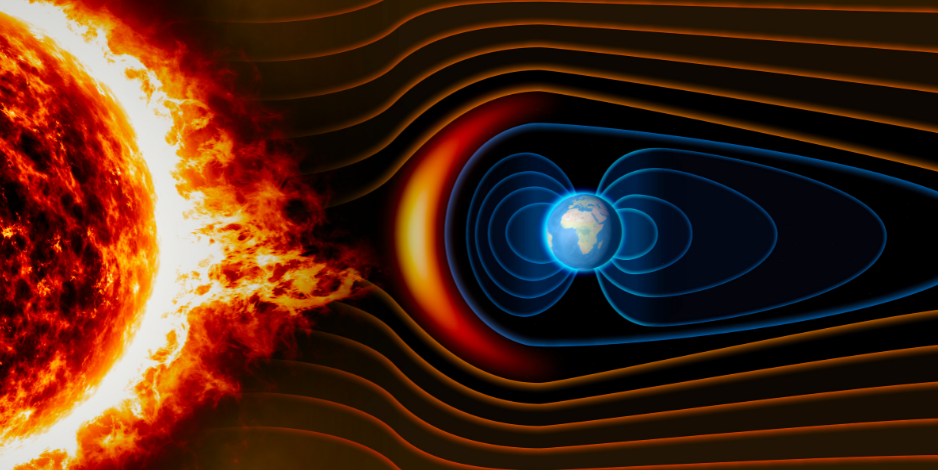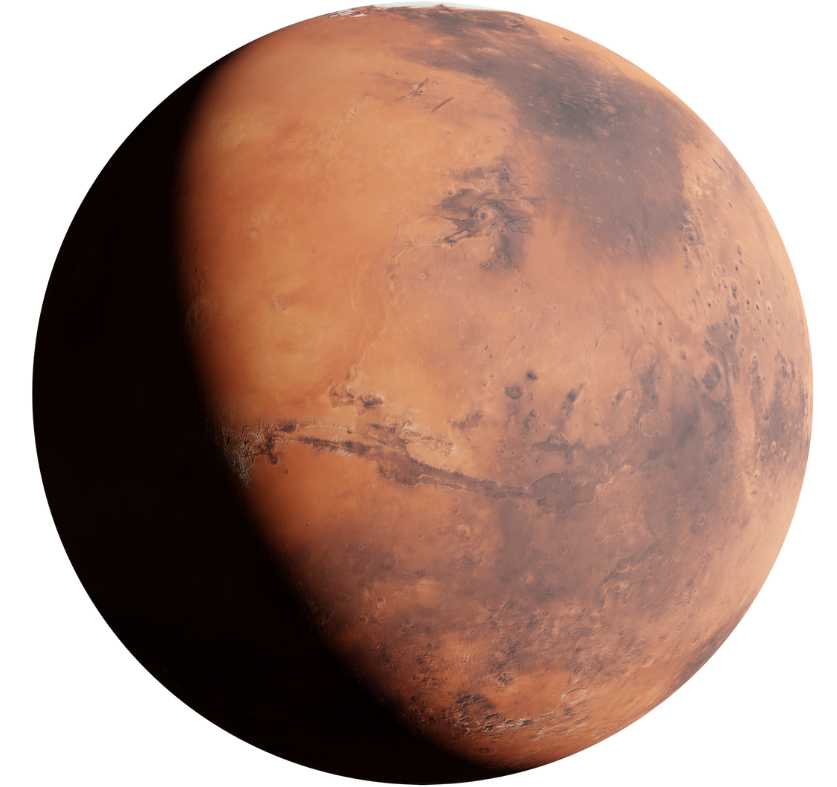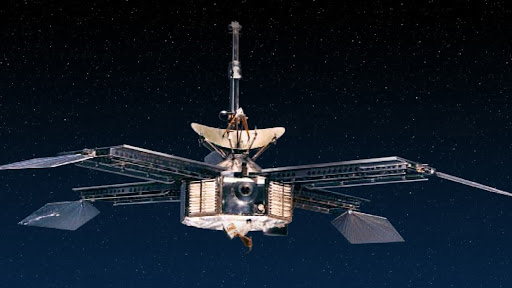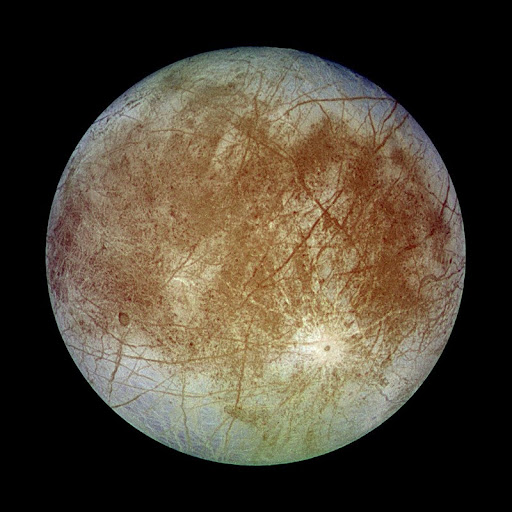What Is a Terrestrial Planet?
When we refer to terrestrial planets, it helps to understand first the definition. Terrestrial and telluric are from the Latin words for Earth (Terra and Tellus) because these planets have a composition that is similar to that of the Earth.

The four terrestrial planets, in order of distance from the Sun, are:
- Mercury
- Venus
- Earth
- Mars
We can easily identify the terrestrial planets because they have solid and rocky surfaces. They are smaller but much denser than the gas giants.
As the name says, the gas giants are just big balls of gases like hydrogen and helium. The four giant planets in our solar system are Jupiter, Saturn, Uranus, and Neptune. They are also called Jovian planets, after Jupiter, and are located in the outer solar system.
The Inner Solar System
Where do the terrestrial planets exist in the solar system? These rocky worlds are in the inner solar system. They are located much closer to the Sun than the giant planets.
The inner solar system is composed of the terrestrial planets and the asteroid belt.

Looking at their compositions, why are the inner planets rocky and the outer planets gaseous?
The answer to that lies in their distances from the Sun. Because they are much closer, the inner planets receive more intense solar radiation. The solar wind blew off most of the lighter elements from the inner planets. As time passed, only the heavy materials were left on these planets.
The size of the inner planets also played a part in this. Smaller size means lesser gravity. That means they were not able to hold the escaping gases.
The more distant outer planets were not as much affected by the solar wind. Plus, they’re also much bigger. So they retained their original atmospheres. The terrestrial planets only formed a secondary atmosphere through outgassing and volcanic activity.
The asteroid belt is also in the inner solar system. It lies between the orbits of Mars and Jupiter. This donut-shaped region is composed of planetesimals—rocky leftovers from the formation of the solar system.
Characteristics of a Terrestrial Planet
Terrestrial planets share some similar characteristics that make them a unique class of their own.
Composition and Structure

First of all, terrestrial planets have a distinct composition. They are mostly composed of silicate rock and metal. These planets have solid surfaces, so we have something to land on these planets. Many spacecraft have landed on the rocky planets in our solar system, especially on Mars.
Terrestrial planets have distinct and differentiated layers in the interior. At the center of these compact worlds is a metal core, most commonly iron. This core is then surrounded by a silicate mantle.
The surfaces of these planets are also marked by different features. They are plain in some regions but there are also areas of cratering and highlands. Like on Earth, we have water on the surface. Tectonic activities also help shape the formation of our landforms like mountains and valleys.
No Rings, Fewer Moons

As observed, none of the terrestrial planets in our solar system has rings. Unlike the Jovian planets, they also have fewer moons. Mercury and Venus have no natural satellites. Earth has one (the Moon) and Mars has two (Phobos and Deimos).
Atmosphere and Magnetic Field
The terrestrial planets in our solar system, except Mercury, have a significant atmosphere. Because of its small size, Mercury does not have much gravity to hold an atmosphere like the others.
Mercury’s distance from the Sun means that it is constantly bombarded by solar radiation. It has a thin exosphere instead.
Also, terrestrial planets are different because they have secondary atmospheres. The giant planets have primary atmospheres from the solar nebula.

Earth is the only terrestrial planet with a significant magnetic field. This is one of the important factors that make it habitable. It shields our planet from solar wind and particles that can be harmful to our atmosphere.
Mars no longer has a global magnetic field. It was believed that the red planet lost its magnetic field about four billion years ago. Because of that, the atmosphere of this planet is no longer protected against harsh solar winds.
The Terrestrial Planets in Our Solar System
The terrestrial planets are the four closest planets to our Sun. Lying in the inner solar system, they are also the densest of the eight planets.
Relative distance of the inner planets from the Sun

Mercury

Mercury is only a third of Earth’s size and is the smallest of the eight planets. As the closest neighbor of the Sun, it has not retained any moon and atmosphere. The Sun would look three times as big on this planet as seen here on Earth.
Astronomers believe that there is water around the planet’s north and south poles, just like the Earth’s Moon. Still, it receives intense solar radiation and a human would not survive there.
Mercury is the fastest-moving planet of all. Moving at about 47 kilometers per second (29 miles per second), it also has the shortest orbital period. While a year on Earth takes about 365 days, a year on Mercury is only 88 Earth days long! [Learn more about Mercury]
Venus

Venus is surrounded by a thick atmosphere of carbon dioxide. This atmosphere is so thick that it obscures observations of the planet’s surface. It is also responsible for making Venus the hottest planet in our solar system.
This planet is often called “Earth’s twin” because of its size. However, its atmosphere would be very toxic to us, humans. This planet is visible to the naked eye and is the second-brightest celestial body in our night sky after the Moon.
Venus is unique because it rotates backward. Because of that, the Sun also takes the opposite course as seen on Venus. It rises in the west and sets in the east. Also, a day on this planet is longer than its year! [Learn more about Venus]
Earth

The Earth is the only planet known where life as we know it can flourish. Our home planet is unique among the other terrestrial planets because it has the perfect ingredient for life to exist.
Water comprises about 70% of the Earth’s surface. Our atmosphere is rich in oxygen and the magnetic field of our planet protects us from solar radiation. The shift in plate tectonics is also beneficial to the carbon cycle on our planet.
The Earth has only one Moon. This natural satellite affects the tides in the oceans and the lives of humans and animals alike. [Learn more about Earth]
Mars

Mars is a dusty desert and the fourth planet from the Sun. It is nicknamed the “red planet” because of the iron minerals on its surface. As it is exposed to the elements, the iron rusts and makes the whole place reddish.
Mars is said to have the ingredients for life such as organics and water ice. It has polar ice caps and methane has been found on this planet. On the surface, Mars is heavily cratered. The tallest mountain in the entire solar system, Olympus Mons, is found on this planet.
A day on this planet is roughly the same length as a day here on Earth. It has the most moons among the terrestrial planets. [Learn more about Mars]
Life on Other Terrestrial Planets
Other than Earth, it is believed that the conditions on Mars are the most hospitable for life. There may have been life there in the past, and there may still be life on Mars today. Meanwhile, the extreme conditions on Mercury and Venus are too harsh to sustain and nurture life.
Spacecraft Visitors and Their Findings
Although no human has visited the terrestrial planets in our solar system, we have sent many unmanned probes to these rocky worlds. Some were successful, while some were not.
Over time, findings from these spacecraft have given us clues on what it is like on other terrestrial planets in our solar system.
To Mercury
The first spacecraft to visit Mercury was Mariner 10. It also explored Venus on its way to Mercury. This spacecraft launched in 1973 and performed three flybys on the innermost planet.

Mariner 10 discovered that Mercury’s surface has ridges, craters, and other features like our Moon’s. During its course, Mariner 10 was able to map a big part of the planet’s surface. It also sent more than 2,700 images.
Another visit to Mercury was made by the MESSENGER spacecraft. It was the first robotic space probe to orbit Mercury. Among its many discoveries is the presence of water in the planet’s exosphere.
Launched in 2018, the European-Japanese mission BepiColombo is the third mission to Mercury. It will study the planet’s surface and composition. After several flybys, it will enter into orbit in December 2025.
To Venus
The second planet from the Sun, Venus, has been visited by many spacecraft through the years.

The first successful flyby to another planet was made by Mariner 2 on Venus. It was launched in 1962. At that time, much was still unknown about Venus.
Before Mariner 2, many thought that the climate on Venus was probably comparable to the Earth’s tropics. However, during a flyby, the spacecraft discovered the very high temperature on the planet caused by greenhouse effect. Mariner 2 also discovered that the planet has no water, no magnetic field, and no plate tectonics like Earth.
More than 40 spacecraft have been sent to Venus. The Soviet’s Venera mission had more than 10 probes to explore the planet, including landers.

The Magellan mission was also another important mission to Venus. It was discovered that more than 80% of the planet’s surface is covered with volcanic materials.
To Mars
Mars, aka the Red Planet, is a favorite spacecraft destination. It is an interesting world as it is the most Earth-like candidate among the terrestrial planets.

Though Mars seems like a spacecraft magnet, reaching this planet is anything but easy. About 50 missions have been sent to Mars so far, but roughly half of them were unsuccessful. Still, it is the most explored planet in the solar system, with rovers roaming the dusty world.
The Mariner 4 performed the first successful Mars flyby in 1965. It gave us a first look at the Martian surface, which has a lot of impact craters. The first rover on the Martian surface was Sojourner, brought into the surface by the Mars Pathfinder lander.

The Curiosity rover has made important discoveries on the red planet. Rounded pebbles indicate an ancient streambed and, therefore, water in the past. Findings on the planet’s chemistry and atmosphere make the search for life more exciting. Though, the radiation there is harmful to humans.
No human has landed on Mars yet, but conceptual missions have been proposed throughout the years.
Could Life Exist Elsewhere in the Solar System?
Several objects in the solar system have similar structures to the terrestrial planets. The Moon, for example, has a crust, mantle, and core. This iron core, however, is much smaller. It has been speculated that the Moon may have been habitable in the past.

As indicated in many missions, there is evidence of water on other terrestrial planets. This may indicate that they were once habitable.
The innermost planet, Mercury, may have water ice near the poles. If life indeed existed in this world, the life forms are most likely primitive microorganisms. In its early years, Venus may have had water on its surface. The presence of methane in Mars’s atmosphere is an indication of microbial life.
Life, as we know it, is still impossible on other planets. The other terrestrial planets are way too hot. The gas giants, on the other hand, have no solid surfaces and are very cold. Aside from the planets, other objects in the solar system have environments that can potentially be habitable for extraterrestrial life.

Jupiter and Saturn may not be able to foster life, but we might get a shot with their moons. The Galilean moon Europa is a strong candidate because it might have a subsurface liquid water ocean.
Saturn’s largest moon, Titan, is also speculated to have the potential for life. This moon has a significant atmosphere and liquid on the surface. The internal global ocean of the icy moon, Enceladus, also makes it a major subject in terms of habitability.
At the end of its mission, the Cassini spacecraft plunged into Saturn to avoid damaging potentially-habitable moons of the ringed planet.

Aside from planets and moons, the dwarf planet Ceres can also possibly harbor life. It has a thin atmosphere of water vapor. This can be an indication that life may have existed there in the past. Also, the distant and cold Pluto may have had the potential for habitability when it formed. It has a rocky core and is believed to have a subsurface ocean.
The Search for Extrasolar Terrestrial Planets
We know that the Sun is just one of the many stars out there. With so many stars, we could only assume that there will also be so many planets. These other worlds outside our solar system are called “extrasolar planets.”

From the word terra, terrestrial means Earth-like. The presence of oxygen in Earth’s atmosphere is an indication of life. Therefore, detecting oxygen in the atmospheres of extrasolar planets would be a major breakthrough.
Because of their great size, Jovian giants are the most commonly detected types of extrasolar planets. However, some are considered super-Earths.
Super-Earths are extrasolar planets with masses between that of Earth and Neptune. Since this category only tells us about their masses, they can either be gas or terrestrial planets. Below are some extrasolar planets that are believed to be terrestrial worlds:
-
- Kepler-452b — Nicknamed “Earth’s Cousin,” it is likely a rocky world in the habitable zone of the solar-type star Kepler-452.
- HD 85512 b — A rocky Earth-sized planet orbiting the K-type star HD 85512.
- Gliese 876 d — A super-Earth terrestrial exoplanet orbiting a red dwarf star.
- TRAPPIST-1 system — A collection of seven Earth-size planets orbiting a red dwarf star. These exoplanets have similar densities and are roughly as massive as Earth.
Types of Terrestrial Planet
Just like the gas giants, there are also different types of terrestrial planets. Since the terrestrial planets in the solar system are of the silicate type, the other categories are still theoretical.
-
Silicate Planets
Silicate planets are differentiated internally. They have metallic cores, mostly iron, surrounded by a silicon-based mantle. The inner planets in our solar system all belong to this type.
-
Ice Planets
Ice planets are a theoretical type of terrestrial world. On the surface, these cold worlds can contain water, carbon dioxide, methane, ammonia, and carbon monoxide. They likely have subsurface oceans and cryovolcanoes.
Ice planets are like the bigger versions of the icy moons in our solar system. To know what these worlds are like, we can take a look at Enceladus, Titan, and Triton for inspiration.
-
Iron Planets
Iron planets are another hypothetical class that is largely composed of iron. Planets of this type are thought to have formed closer to the star.
Also, if they had a rocky mantle in the past, it was likely scraped off by impacts. They are smaller yet denser and have no plate tectonics.
-
Coreless Planets
As the name implies, coreless planets are mostly rocky. They have no metallic core and are believed to have formed farther from the star. In short, this hypothetical planet type is the opposite of iron planets.
-
Carbon Planets
Carbon planets are believed to have a metallic core with a carbon-based mantle. These planets are more abundant in carbon than oxygen. This type is also dubbed “diamond planets.”
Interesting Terrestrial Planets Facts
- From largest to smallest, the terrestrial planets are Earth, Venus, Mars, and Mercury. Earth is roughly 12,756 km (7,926 miles) across while Venus is 12,104 km (7,521 miles) across. They are often called “sister planets” because of their similar sizes.
- The inner planets have a shorter orbital period than the outer planets, but a longer orbital period.
- As we now know, the terrestrial planets in our solar system have no rings. There is a possibility, however, that they may have had rings in the past that disappeared over time.
- The four terrestrial planets have anything but a smooth surface. They have impact craters and other features like volcanoes.
- Of all the inner planets, Venus has the least impact craters. This is mostly because of this planet’s thick atmosphere. Most objects disintegrate whenever they enter the planet’s atmosphere. Because of that, only a few of them reach the ground and make impacts.
- According to the Kepler mission, there could be billions of terrestrial exoplanets in our Milky Way galaxy alone. The closest of them is believed to be about 12 light-years away from us.
Sources:
https://depts.washington.edu/astron/old_port/TJO/newsletter/spr-2016/xinyu.pdf
(https://www.universetoday.com/50289/terrestrial-planet/)
https://www.space.com/17028-terrestrial-planets.html
(https://space-facts.com/terrestrial-planets/)
https://solarsystem.nasa.gov/basics/chapter1-2/
https://en.wikipedia.org/wiki/Terrestrial_planet
https://solarsystem.nasa.gov/missions/mariner-10/in-depth/
https://www.nasa.gov/feature/55-years-ago-mariner-2-first-to-venus
https://mars.nasa.gov/msl/mission/science/results/
https://en.wikipedia.org/wiki/Extraterrestrial_life
https://www.nasa.gov/feature/the-7-rocky-trappist-1-planets-may-be-made-of-similar-stuff
https://solarsystem.nasa.gov/planets/mercury/overview/
https://solarsystem.nasa.gov/planets/venus/overview/#otp_ten_things_to_know_about_venus
Image Sources:
Terrestrial planets: https://upload.wikimedia.org/wikipedia/commons/thumb/8/8b/Telluric_planets_size_comparison.jpg/800px-Telluric_planets_size_comparison.jpg
Martian soil: https://upload.wikimedia.org/wikipedia/commons/thumb/d/dc/PIA17944-MarsCuriosityRover-AfterCrossingDingoGapSanddune-20140209.jpg/600px-PIA17944-MarsCuriosityRover-AfterCrossingDingoGapSanddune-20140209.jpg
Earth and Moon: https://upload.wikimedia.org/wikipedia/commons/thumb/f/f9/Moon%2C_Earth_size_comparison.jpg/1143px-Moon%2C_Earth_size_comparison.jpg
Mariner 10: https://solarsystem.nasa.gov/system/content_pages/main_images/1316_mariner10.gif
Mariner 2: https://upload.wikimedia.org/wikipedia/commons/thumb/9/90/Mariner_2.jpg/1024px-Mariner_2.jpg
Crater farm on Venus: https://solarsystem.nasa.gov/internal_resources/3536
Mariner 4: https://d2pn8kiwq2w21t.cloudfront.net/original_images/missionswebmariner3_4.jpg
Curiosity rover: https://mars.nasa.gov/system/feature_items/images/6037_msl_banner.jpg
The Moon: https://upload.wikimedia.org/wikipedia/commons/thumb/e/e1/FullMoon2010.jpg/800px-FullMoon2010.jpg
Europa moon: https://upload.wikimedia.org/wikipedia/commons/thumb/e/e4/Europa-moon-with-margins.jpg/800px-Europa-moon-with-margins.jpg
Ceres: https://upload.wikimedia.org/wikipedia/commons/thumb/7/76/Ceres_-_RC3_-_Haulani_Crater_%2822381131691%29_%28cropped%29.jpg/800px-Ceres_-_RC3_-_Haulani_Crater_%2822381131691%29_%28cropped%29.jpg
TRAPPIST-1 system: https://upload.wikimedia.org/wikipedia/commons/thumb/d/d8/PIA22093-TRAPPIST-1-PlanetLineup-20180205.jpg/1920px-PIA22093-TRAPPIST-1-PlanetLineup-20180205.jpg